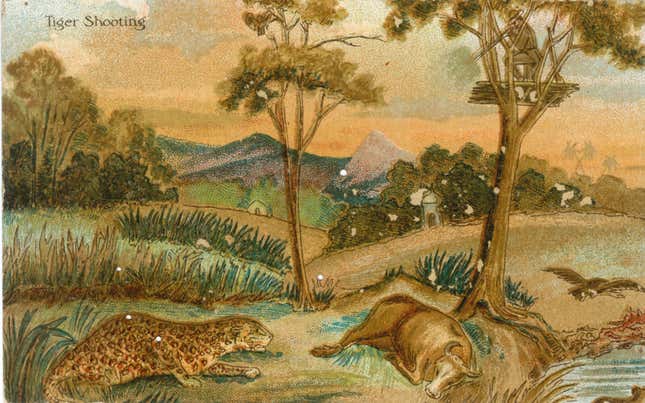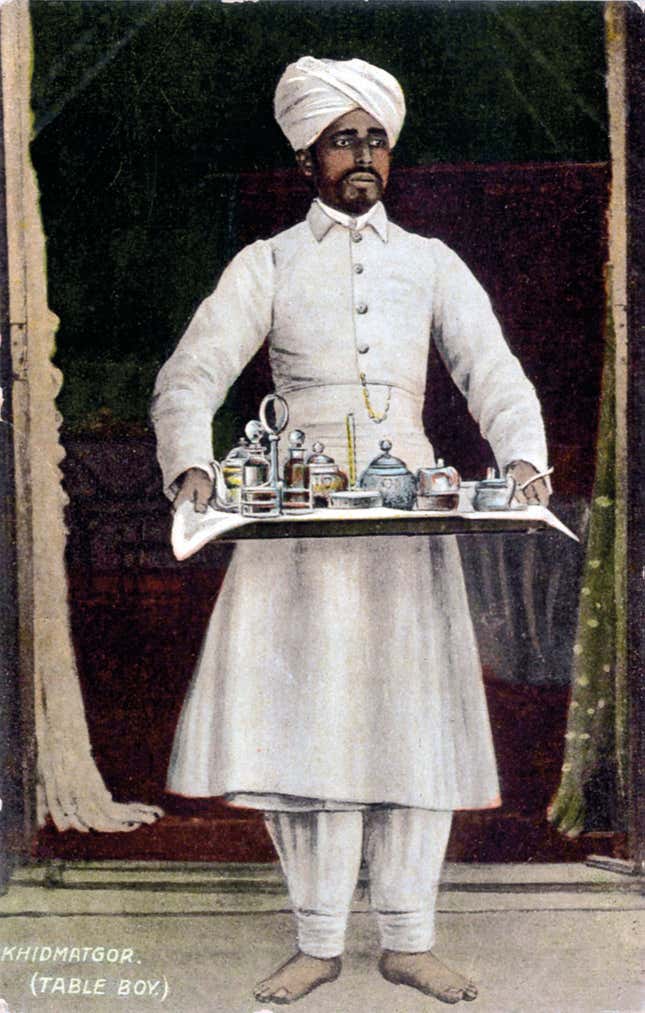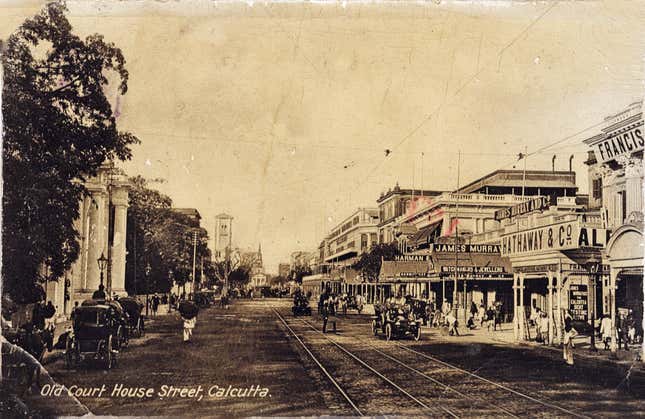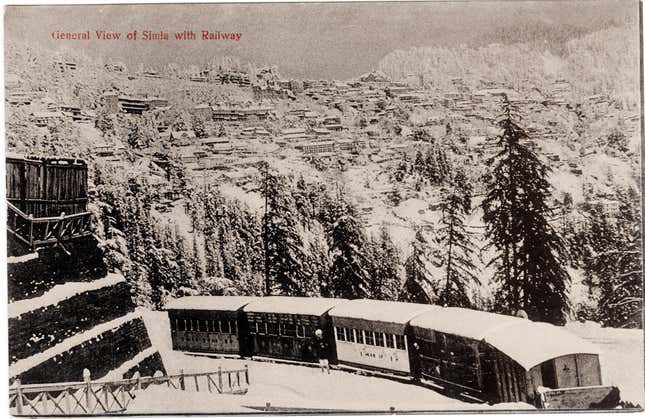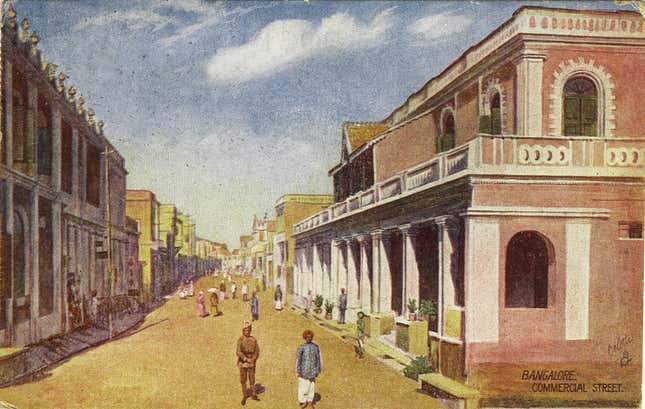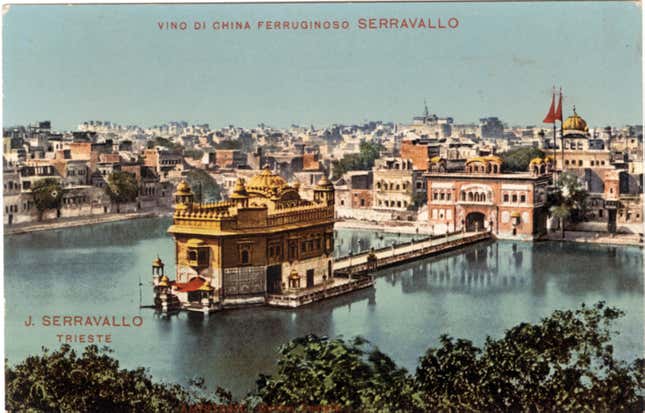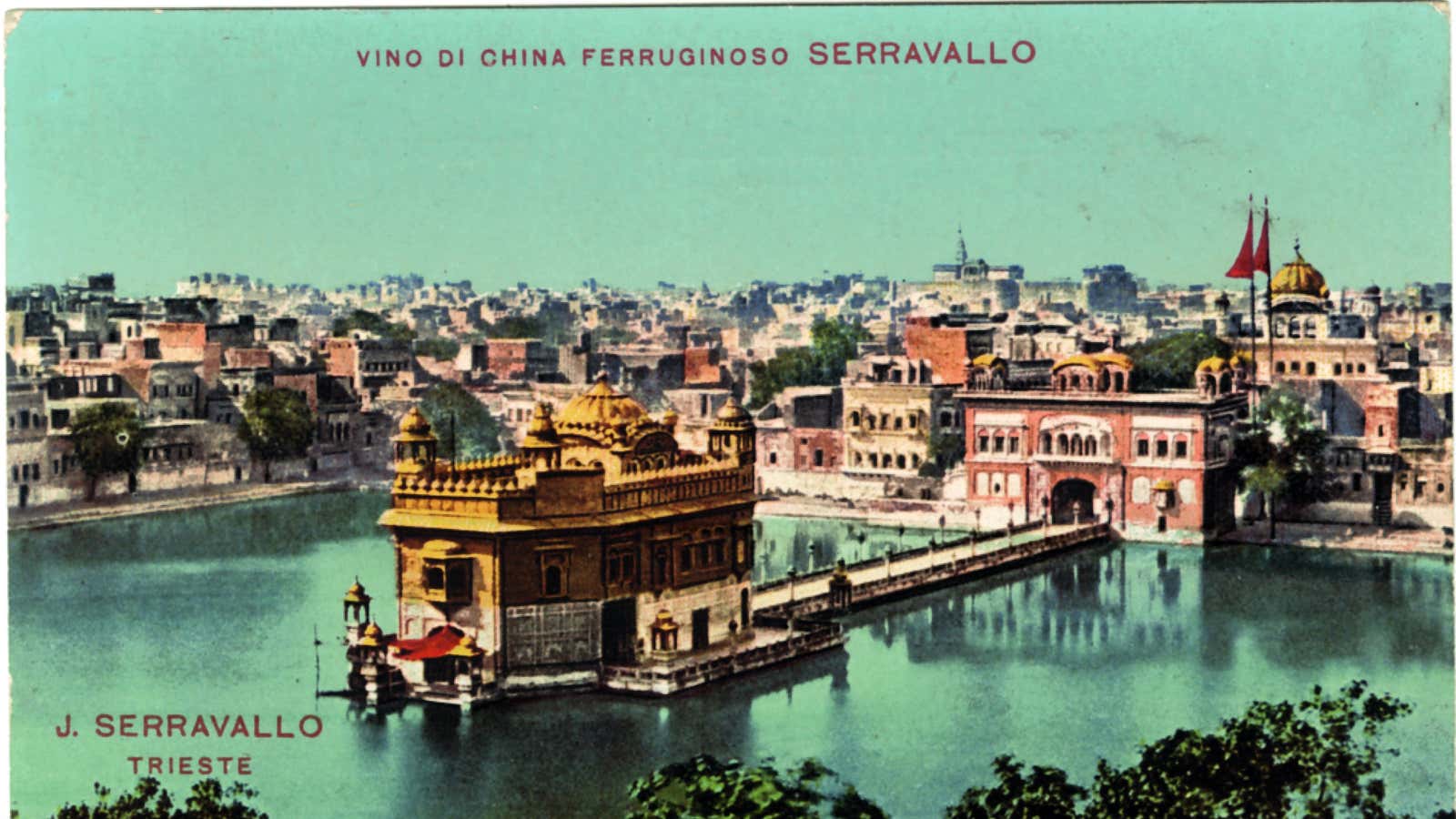In 2003, after working in management around the world, Sangeeta and Ratnesh Mathur ended up in the Czech Republic. There, the couple stumbled upon countless old bookstores and antiquarian markets stocking a stellar collection of maps, lithographs, coins, porcelain, and postcards—many featuring people and places of India.
“We started visiting these fairs and we saw that there’s such a huge collection of picture postcards which had been sent by Europeans in India to their friends and family abroad,” Sangeeta Mathur told Quartz. “…we realised that there’s this whole wealth of information in picture postcards.”
The earliest postcards they found dated back to the 1870s and 1880s, when India was portrayed as the “exotic Orient.” But once the British expanded their hold over the region, picture postcards became a sort of propaganda, Mathur says, capturing the growth of new capital cities in Calcutta (now Kolkata), Bombay (Mumbai), and Madras (Chennai), besides infrastructure such as the railways and bridges.
At fairs and markets, these postcards were carefully catalogued by region and preserved beautifully, so the Mathurs started collecting them on their trips across Europe.
They returned to India in 2010, and their collection has grown to staggering 6,000 postcards, featuring not just Indian scenes but also images of what is now Pakistan, Bangladesh, and Sri Lanka. Over 500 of them are featured in a new book, Picturesque India: A Journey In Early Picture Postcards (1896-1947), published by Niyogi Books.
The book tells the story of picture postcards of and in India, revealing that advancements in printing meant that Indian postcards were actually seen in Europe long before they were introduced in India. But once they arrived in 1896, they quickly became a sensation, the Instagram of that era, with millions sold and sent every year.
The goal of the book, Mathur says, is to present a visual history of India through its picture postcards, focusing specifically on 130 towns and cities that have changed dramatically over the years. The couple has images of Vizag (now Visakhapatnam) before and after the construction of the port that helped turn it into a financial capital, besides a postcard showing Chandigarh before it became independent India’s first planned city. There are also fascinating views of neighbourhoods in Bombay, Calcutta, and Bangalore (Bengaluru).
But the true beauty of the book is simply having access to these rare and historic postcards, most of which would have been unavailable to Indians who don’t live in Europe. Earlier this year, an institution in London hosted an exhibition of similar vintage postcards, but it’s likely few Indians got to see it.
The Mathurs want to eventually set up a museum in India to display their collection, and they’ve also begun digitising their postcards to make them available to a wider audience. In this, they’re among a small community of passionate private collectors in India who are doing their bit to preserve pieces of Indian history in the absence of enough public funding or interest.
“There’s so much history in India (and) there are people doing their bit (to preserve it). The thing is how to bring them together,” Mathur said.
Here’s a selection of postcards from Picturesque India, beginning with the early “exotic” variants:
